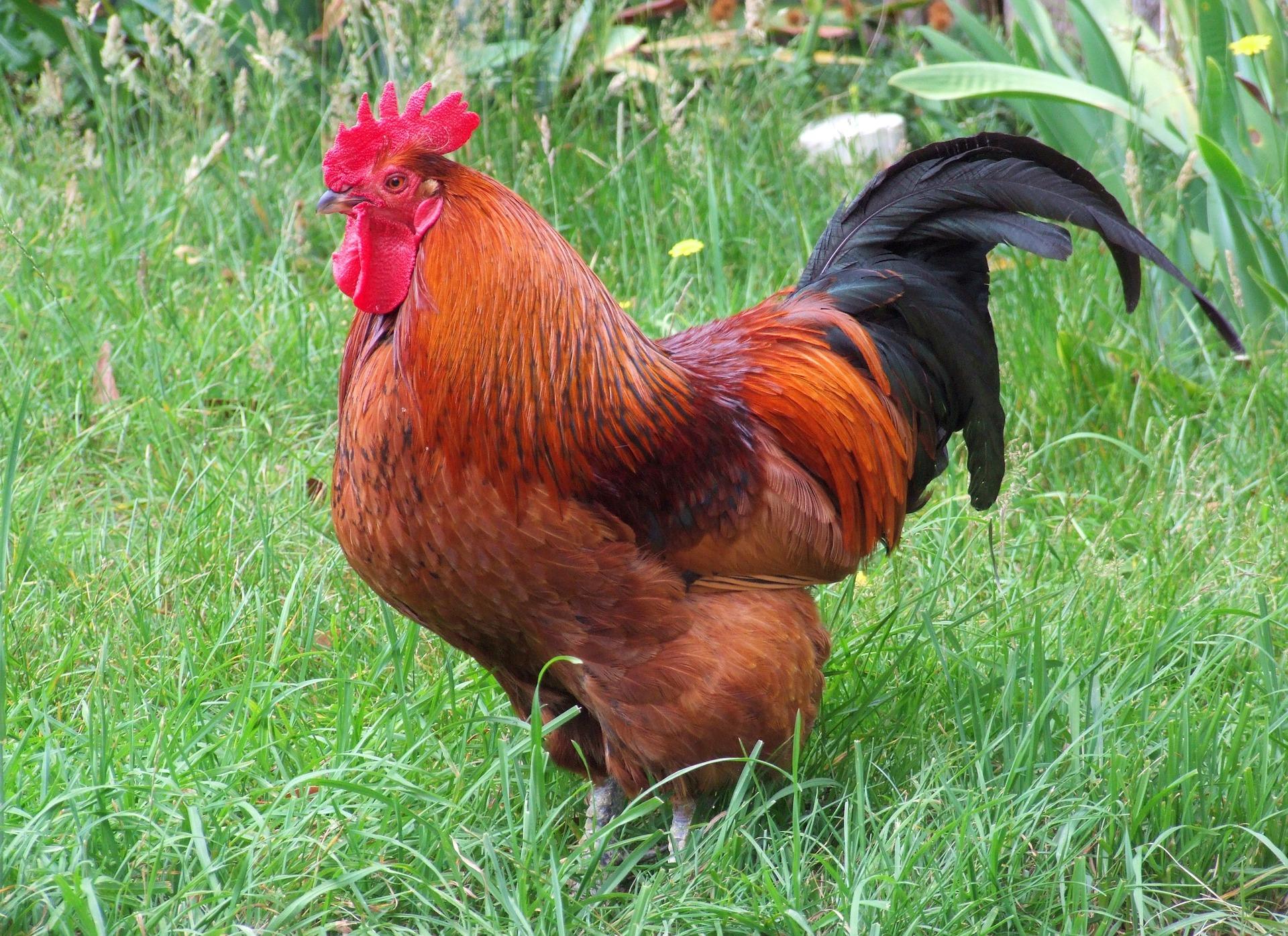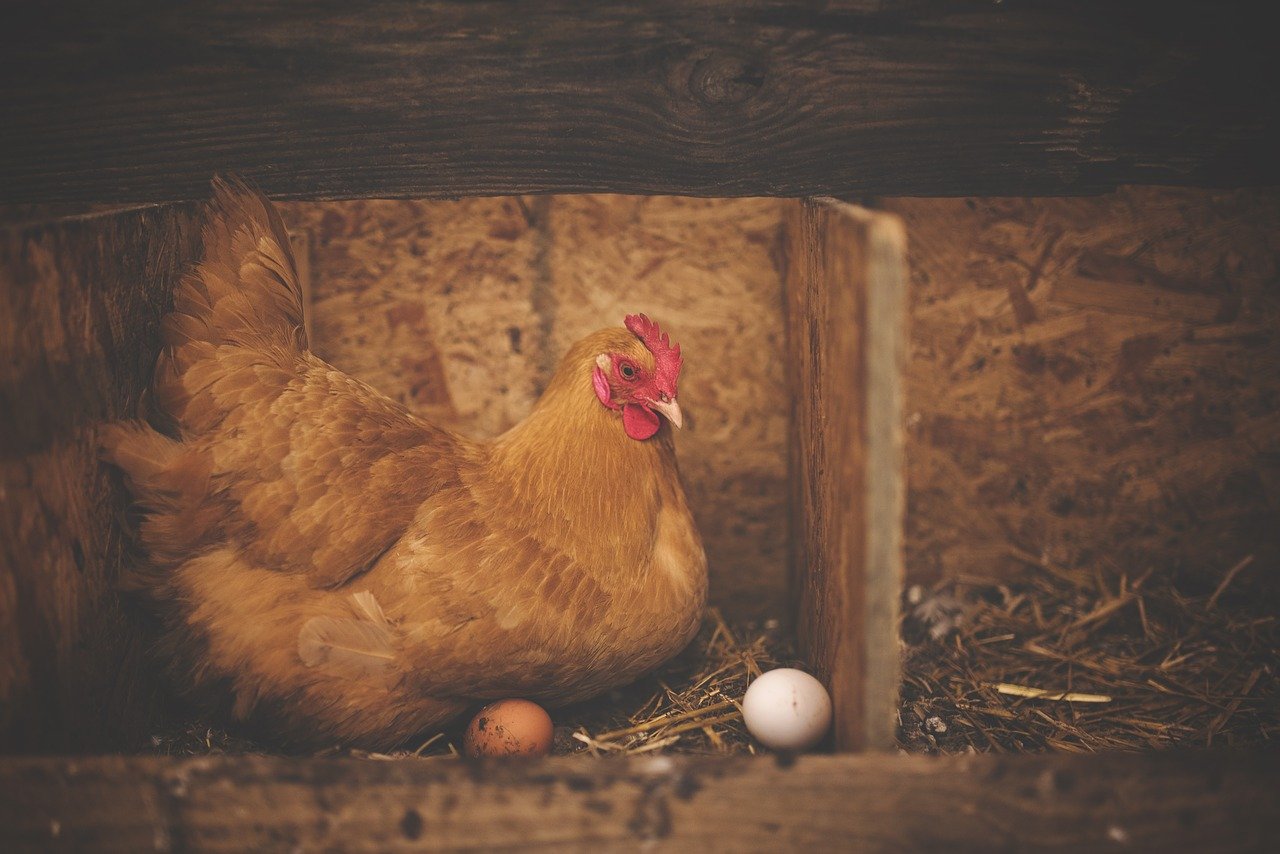There are various parameters that are being used to measure the productivity of laying chickens.
These include egg quantity, quality, egg size, feed utilization, mortality rates, etc.
Under good management practices, a layer should lay one egg in a day, and between 310 -340 eggs per year.
There are different factors that affect egg production and I’ll discuss them later in this article
With the best strains of layers and proper layer poultry production and management, more than 330 eggs per layer in a year is very much realizable.
Chicken Egg production Cycle
Ideally, egg-laying is between 8.30 am and 5.30 pm in the day and there are three phases of the layer’s egg production cycle.
At the early phase of laying, the egg size is usually small but it progressively increases.
The first phase of laying lasts between eight and twelve weeks before the flock reaches the peak of egg production.
The second phase involves a slight decline in the number of eggs laid and may last for another twenty weeks.
The third phase is characterized by the reduced conversion rate of feed to eggs.
It will consequently terminate into annual molting. After the process of molting, the hen produces a larger size of eggs, though fewer in number.
This process may decline progressively leading to molting again thus ending the second year in laying and may continue laying in decreasing order.
You may cull at the end of the first molting or after one production cycle of 12 months.
Factors influencing laying performance
Egg farming is profitable only when your layers can maximize their feeds and produce big and healthy eggs daily.
If you can have 95 percent egg output daily for the whole year, then it’s a big success.
There are times poultry farmers witness a sudden drop in egg production in layers, this may be normal if it’s just for few days or a couple of weeks.
It happens at one time or the other in the egg production cycle, but if the quality of the egg production is really low, then you need to act fast.
The following factors are known to significantly affect the laying performance of birds.
- Layer’s Breed
- Bird behavior
- Age
- Housing
- Feed/Feeding
- Bird body weight
- Diseases
- Molting flock
- Egg collection
- Management practices
How to make Layer Chicken lay more Eggs
In commercial layers egg production, the management practices for the good production of quality eggs are nothing to joke with.
To increase egg production in layers, the above-mentioned factors should be seriously improved.
- Layer’s Breed: The breed is a very important factor since some layers usually produce high quality and a high number of eggs in their bloodline.
They have been genetically modified to produce a high quantity of eggs than their peers.
Some of the Top breeds that actually produce a lot of eggs are Rhode island red, Sussex, Leghorn, Lohmann brown, Australorp, Plymouth rock, Golden comet, etc.
Using two to three of these breeds as your breeding stocks would be a good idea.
- Bird Behavior: This has to do with the individual bird and may/may not affect the egg production massively.
Birds usually lay eggs they can hatch since the purpose of their laying is breeding.
A bird may feel she can not raise many chicks, therefore, not producing many eggs.
Also, they breed primarily in spring and autumn, when the temperature is moderate.
Some birds like being broody and sitting on the eggs repeatedly will make it unedible for human consumption.
You need to, therefore, separate such a bird and inhibit such behavior. You can put ice in the nest or pick the egg quickly.
Some birds also like breaking their eggs and eat it, this should also be inhibited.
Such a bird should be isolated before other birds learn egg-eating behavior.
- Age of the birds when laying: The age of the birds when they are laying is also important and influences the quantity and size of their eggs.
A layer that just starts laying will lay eggs frequently and the size would be small. Later, she will start to lay bigger eggs and it will be regular till it reaches the peak of production.
Thereafter, the quantity will decline while the size will be improved. Old hens often lay (from year to year) a little less (but mostly bigger) eggs.
This is explained under the egg production cycle above.
Housing: This another viral aspect of layer management. A good lighting system stimulates the endocrine system of the birds.
Ensure you provide 24 hours light for your birds for the first week of life, and gradually reduce to 19 hours at 4 weeks.
For effective performance, laying birds need 16 hours of light daily. The natural light can serve this purpose.
The warmth light provided is important in food metabolism, for example – Calcium
Laying birds are not to be given light at night except if on medications.
Make sure the temperature is well controlled – Anything a little more than 12°C is required.
If the lighting system is poor, more Calcium would be released from the bones of the birds for the eggshell than is stored during the day.
Also, ensure there’s good ventilation and the birds are not overcrowded so they don’t get stressed up.
If the temperature is very low, more energy will be used for maintaining body heat than the hen can convert for maintenance requirements.
- Feeds/Feeding: The nutrients in the feeds given to layers can help in egg production. Nutrition is essential to healthy growth and fertility of birds.
Feeds should be rich in protein, minerals, and vitamins. Also, clean and fresh water should be made available.
The right feeders and drinkers should be provided for effective performance.
Purchase and give only feeds that are specifically formulated for layers.
The minimum requirements for a complete feed for laying hens are 16% RP (raw protein, protein)
Make sure there’s at least 0.32% methionine (limiting amino acid), and 3.5% Ca for the eggshell.
Energy content, depending on the breed can be approximately 11.5MJ/ME(poultry).
In a standard feed for layers (aka “laying grain”), all of these should be put into consideration.
All other necessary nutrients, minerals, vitamins, and trace elements should not be left out.
If you formulate your layers’ feeds yourself, you should also pay attention to the required composition.
- Bodyweight: The bodyweight of the layers should be well controlled. Their feed should contain the required energy ratio to other nutrients.
The layers should weigh at least 1.6 kg and not more than 2.0 kg. Both underweight and overweight layers are likely going to produce a low number of eggs.
Although the general weight of your bird has to do with the chosen breed. Some breeds can easily attain around 2kg with average feeding.
It’s still important to control the weight of birds when they are laying eggs. Optimum body weight during this period should be within the above range mentioned.
- Diseases: Abnormal condition of a bird can make it to quit laying eggs. Just like in all animals, diseases can limit growth and production.
Prevent diseases and parasites as much as possible by giving them vaccines at the right time.
Also, adopt modern best management practice and be responsive in giving treatment should there be an outbreak of disease.
They lay a maximum of one egg a day and since the nest practically never gets full (unless you want to breed chicks) due to the fact that you remove the eggs regularly, the hens produce eggs all the time.
Choosing a breed that has resistant to some common diseases can also help to save cost and boost egg production.
- Molting: There’s nothing bad about molting since this is natural and common especially when your birds are aging.
When you notice this, and the egg production has dropped, it can be a pointer that your birds are aged and the laying capacity has diminished.
You don’t have to get worried, only need to start planning to stock a new set of layers for egg production.
- Egg collection: Collecting eggs from the nest box should be done several times a day, especially when your birds are many.
Picking eggs frequently can induce the birds to lay more.
It will also make your eggs to be clean, and will not be broken It will also discourage egg eating and brooding behavior.
- Management practices: Good management practices can help to increase egg size and quantity in layers.
The just mentioned factors are responsible for better yield in egg production.
Conclusion
Planning your egg production is very important if you want your chickens to lay more eggs, bigger and quality eggs.
Following the above-mentioned tips when your hens stop laying eggs will also help.
It’s about understanding the egg production process.









